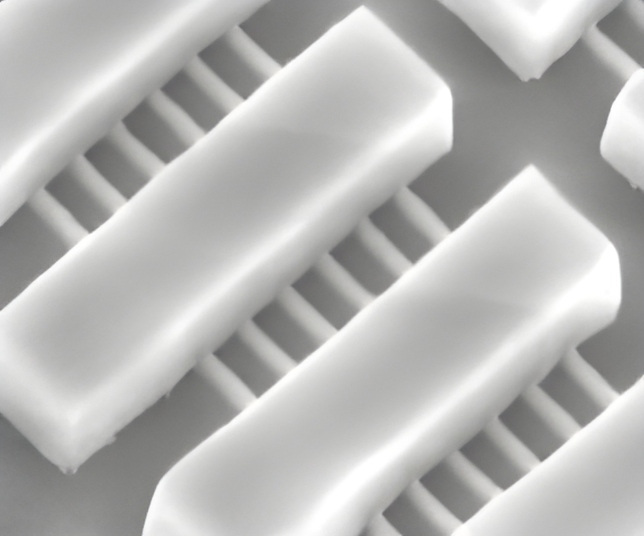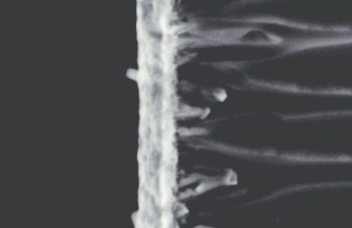Transmission Electron Microscopy Sample Prep

Unlock the microscopic secrets of materials with precision and clarity using Transmission Electron Microscopy (TEM).
Essentials of Transmission Electron Microscopy
Transmission Electron Microscopy (TEM) is a powerful technique used to study the structure and composition of materials at the atomic scale. It utilizes a beam of electrons to image and analyze specimens, providing high-resolution and detailed information.
TEM requires the use of thin samples, typically less than 100 nanometers thick, which are capable of transmitting the electron beam. These samples can be prepared using various techniques, such as thinning by mechanical polishing or ion milling.
In addition to imaging, TEM can also be used for diffraction experiments to study the crystallographic properties of materials. It allows for the determination of crystal structures, grain orientations, and lattice defects.
Understanding the essentials of TEM is crucial for successful sample preparation and accurate interpretation of results. By mastering the principles and techniques involved, researchers can unlock the microscopic secrets of materials with precision and clarity.
Preparing Your Samples: Techniques and Tips
Preparing samples for TEM requires careful attention to detail to ensure optimal results. Here are some techniques and tips to consider:
1. Sample Preparation Methods: There are several methods available for preparing TEM samples, including mechanical polishing, ion milling, and focused ion beam (FIB) milling. Each method has its advantages and limitations, and the choice depends on the specific requirements of the study.
2. Sample Cleaning: Prior to imaging, it is essential to clean the samples to remove any contaminants that may interfere with the analysis. This can be done using solvents, plasma cleaning, or ultrasonic cleaning.
3. Sample Handling: Samples should be handled with care to avoid damage or contamination. It is important to use clean tools and avoid touching the sample surface with bare hands. Tweezers or specialized holders can be used for manipulation.
4. Thin Film Deposition: In some cases, it may be necessary to deposit a thin film onto the sample to enhance contrast or protect the surface during imaging.
By following these techniques and tips, researchers can ensure that their TEM samples are of high quality and suitable for accurate analysis.
The Role of Focused Ion Beam in TEM Sample Preparation
Focused Ion Beam (FIB) milling is a widely used technique in TEM sample preparation. It involves the use of a focused beam of ions, typically gallium ions, to selectively remove material from the sample surface.
FIB offers several advantages for TEM sample preparation:
- High Precision: FIB allows for precise milling of the sample, enabling the creation of thin lamellae with controlled thickness and location.
- Site-specific Analysis: FIB can be used to target specific areas of interest within the sample, allowing for localized analysis and characterization.
- Cross-sectioning: FIB can be used to create cross-sectional views of the sample, providing valuable information about its internal structure and composition.
However, FIB milling also has some limitations, such as ion-induced damage and contamination. Careful optimization of milling parameters and post-milling treatments can help mitigate these issues.
Overall, FIB plays a crucial role in TEM sample preparation, enabling researchers to study materials with high resolution and accuracy.
Avoiding Common Pitfalls in TEM Sample Prep
TEM sample preparation can be a challenging process, and there are several common pitfalls that researchers should be aware of:
1. Sample Thickness: It is important to ensure that the sample is thin enough to transmit the electron beam. Thicker samples may result in poor image quality or diffraction patterns.
2. Contamination: Contamination can significantly affect the analysis and interpretation of TEM results. It is crucial to clean the samples properly and handle them in a clean environment.
3. Artifact Formation: Improper sample preparation techniques can lead to the formation of artifacts, such as amorphous layers, cracks, or surface damage. Careful optimization of preparation methods can help minimize these issues.
4. Beam Damage: The electron beam used in TEM can cause damage to the sample, especially at high energies or prolonged exposure. It is important to use appropriate beam parameters to minimize damage.
By being aware of these common pitfalls and taking necessary precautions, researchers can improve the quality and reliability of their TEM sample preparation.
Analyzing Results: What Your TEM Images Reveal
TEM images provide valuable information about the structure and composition of materials at the atomic scale. By analyzing these images, researchers can gain insights into various aspects of the material, such as crystal structures, grain boundaries, defects, and interfaces.
Some key points to consider when analyzing TEM images include:
1. Film Characterization: Careful observation and interpretation of TEM images are essential for extracting meaningful information. This involves identifying features, measuring dimensions, and relating the observed structures to the underlying material properties.
2. Crystallography Analysis: TEM can provide detailed information about the crystallographic properties of materials, such as lattice parameters, crystal orientation, and the presence of defects. Techniques like electron diffraction and high-resolution imaging are used for crystallography analysis.
3. Elemental Analysis: Energy-dispersive X-ray spectroscopy (EDS) can be combined with TEM to perform elemental analysis of materials. EDS allows for the identification and mapping of different elements present in the sample.
4. Quantitative Analysis: TEM images can also be used for quantitative analysis, such as measuring particle sizes, counting defects, or determining the composition of phases. Specialized software tools are available for image analysis and quantification.
By utilizing these analytical techniques, researchers can extract valuable information from TEM images and gain a deeper understanding of the materials under investigation.





